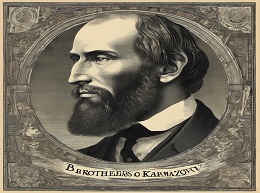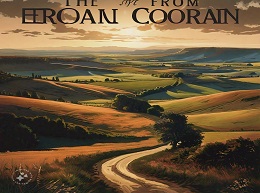The Jungle Book
Exploring "The Jungle Book": Kipling's Timeless Adventure
Rudyard Kipling’s The Jungle Book, first published in 1894, remains a beloved classic in children’s literature. Comprising a series of stories and poems, the book features anthropomorphic animal characters and follows the adventures of Mowgli, a young boy raised by wolves in the Indian jungle. Kipling’s vivid storytelling, rich in detail and imagination, has captivated readers for generations. This review delves into the themes, characters, and cultural impact of The Jungle Book, offering a comprehensive analysis of its lasting significance.
Mowgli’s Journey
The central narrative of The Jungle Book revolves around Mowgli, a human child found and raised by wolves in the jungle. Throughout the stories, Mowgli learns the ways of the jungle from his animal mentors—Baloo the bear, Bagheera the black panther, and Kaa the python. Each character teaches him valuable lessons about survival, loyalty, and identity.
The Threat of Shere Khan
Mowgli’s primary antagonist is Shere Khan, a fearsome tiger who views Mowgli as an intruder and a threat. The ongoing conflict between Mowgli and Shere Khan serves as a central plot thread, culminating in a dramatic showdown that tests Mowgli’s courage and cunning.
Secondary Stories
In addition to Mowgli’s story, The Jungle Book includes several other tales featuring a variety of animal characters. Notable stories include “Rikki-Tikki-Tavi,” about a brave mongoose who defends his human family from cobras, and “The White Seal,” which follows Kotick, a seal pup who seeks a safe haven for his kind. These secondary stories enrich the book’s tapestry, showcasing Kipling’s ability to craft engaging narratives across different settings.
Mowgli: The Human in the Jungle
Mowgli is a compelling protagonist, embodying the themes of identity and belonging. Raised by wolves, he straddles the line between human and animal worlds, learning to navigate the complexities of both. Mowgli’s journey is one of self-discovery and adaptation, as he learns the laws of the jungle and ultimately comes to terms with his dual heritage.
Baloo: The Fun-Loving Mentor
Baloo the bear is one of Mowgli’s primary mentors, teaching him the “Law of the Jungle.” Baloo’s easygoing nature and wisdom make him a beloved character. His lessons often come in the form of songs and sayings, blending humor with important moral teachings. Baloo represents the nurturing, protective aspect of the jungle, emphasizing the importance of knowledge and cooperation.
Bagheera: The Protective Guide
Bagheera, the black panther, serves as Mowgli’s protector and guide. His sleek, powerful presence contrasts with Baloo’s more jovial demeanor, highlighting the dual nature of the jungle both beautiful and dangerous. Bagheera’s deep affection for Mowgli and his fierce determination to keep him safe underscore the themes of loyalty and guardianship.
Shere Khan: The Fearsome Villain
Shere Khan, the tiger, embodies the threats and challenges of the jungle. His animosity towards Mowgli stems from a combination of fear and territorial instinct. Shere Khan’s menacing presence and relentless pursuit of Mowgli add tension and drama to the narrative, driving the story towards its climactic resolution.
Kaa: The Enigmatic Python
Kaa, the python, is a complex character who aids Mowgli but also has his own mysterious agenda. His hypnotic abilities and deep knowledge of the jungle make him a formidable ally and occasional adversary. Kaa’s interactions with Mowgli highlight the unpredictable nature of the jungle and the need for vigilance and adaptability.
The Law of the Jungle
A central theme in The Jungle Book is the “Law of the Jungle,” a code of conduct that governs the animal inhabitants. This law emphasizes respect, order, and balance, reflecting Kipling’s views on society and nature. Through Mowgli’s education, readers learn about the importance of rules and cooperation in maintaining harmony.
Identity and Belonging
Mowgli’s struggle with identity and belonging is a recurring motif. As a human raised by animals, he constantly navigates the boundaries between two worlds. This theme resonates with readers of all ages, highlighting the universal quest for self-understanding and acceptance. Mowgli’s eventual decision to return to human society, while retaining the lessons of the jungle, underscores the importance of embracing one’s heritage and experiences.
Survival and Adaptation
The theme of survival runs throughout the stories, with characters demonstrating resourcefulness, bravery, and resilience. Mowgli’s ability to adapt to various challenges and environments reflects the broader human capacity for innovation and perseverance. The jungle setting serves as a metaphor for life’s trials, emphasizing the need for adaptability and courage.
Colonial Context and Critique
Kipling’s work is often analyzed in the context of British colonialism, with The Jungle Book reflecting and critiquing aspects of imperial ideology. The jungle, with its diverse inhabitants and complex social structures, can be seen as a microcosm of colonial India. The interactions between characters of different species mirror the dynamics of colonial rule, offering insights into themes of power, hierarchy, and cultural exchange.
Adaptations and Influence
The Jungle Book has been adapted into numerous films, television series, and stage productions, each bringing its unique interpretation to Kipling’s stories. The most notable adaptations include Disney’s animated films, which have introduced the characters and themes to new generations. These adaptations often take creative liberties, highlighting different aspects of the narrative and characters while maintaining the core essence of Kipling’s work.
Enduring Popularity
The enduring popularity of The Jungle Book can be attributed to its universal themes, engaging characters, and vivid storytelling. The book’s blend of adventure, humor, and moral lessons appeals to readers of all ages, ensuring its place in the literary canon. Kipling’s ability to create a rich, immersive world populated by memorable characters continues to captivate audiences worldwide.
Anthropomorphism and Allegory
Kipling’s use of anthropomorphism, giving human traits to animal characters, allows readers to explore complex themes through engaging narratives. The animals in The Jungle Book are not merely creatures; they are fully realized characters with distinct personalities and motivations. This technique enables Kipling to address social and moral issues in an accessible and entertaining way.
Descriptive Imagery
Kipling’s descriptive imagery brings the jungle to life, painting a vivid picture of its beauty and danger. His detailed descriptions of the flora and fauna create an immersive reading experience, transporting readers to the heart of the Indian jungle. The rich, sensory language enhances the storytelling, making the setting a character in its own right.
Narrative Structure
The Jungle Book’s structure, comprising interconnected stories and poems, allows for a multifaceted exploration of its themes and characters. This episodic format provides a broad perspective on the jungle and its inhabitants, offering different angles and insights. The varying tones and styles of the stories from adventurous to contemplative add depth and diversity to the narrative.
The Jungle Book remains a timeless classic, offering readers an unforgettable journey into the heart of the jungle. Rudyard Kipling’s masterful storytelling, rich characterizations, and profound themes ensure the book’s lasting relevance and appeal. Mowgli’s adventures and the lessons he learns resonate with readers of all ages, highlighting the enduring power of identity, resilience, and the quest for belonging. Through its vivid imagery and engaging narratives, The Jungle Book invites readers to explore the complexities of nature and humanity, making it a cornerstone of children’s literature and a testament to Kipling’s literary genius.













